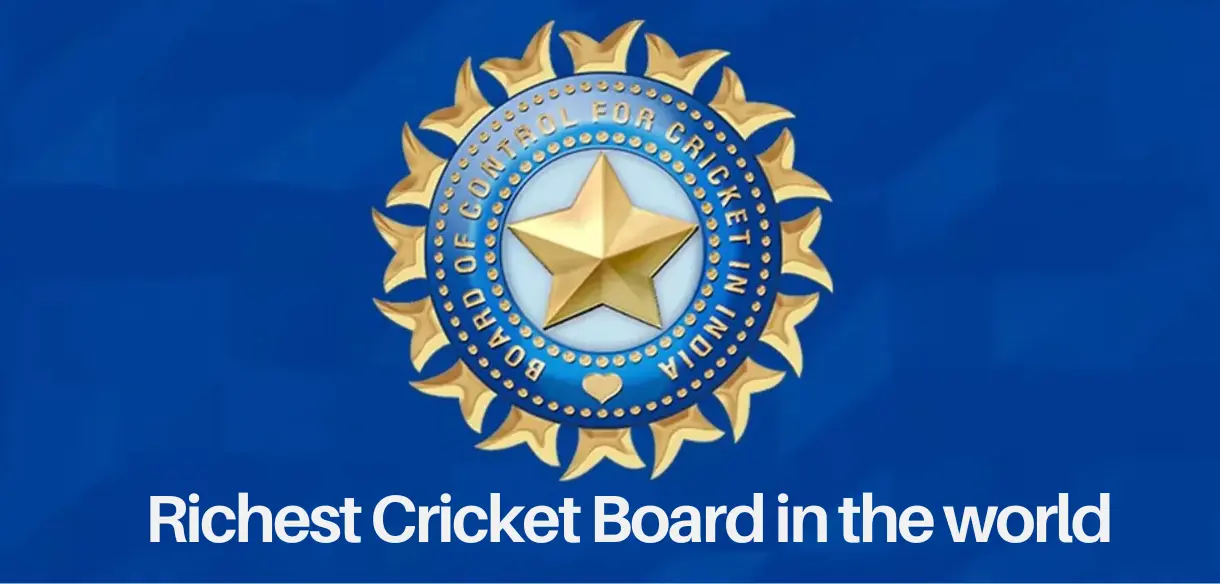Top 5 Ways Cricket Boards Make Money Worldwide

Strong 8k brings an ultra-HD IPTV experience to your living room and your pocket.
Cricket is more than just a sport — it’s a billion-dollar business. From international tours and franchise leagues to digital rights and sponsorships, cricket boards today function like full-fledged corporations. Some cricket boards earn significantly more than others, with India’s Board of Control for Cricket in India (BCCI) leading the way by a massive margin. In this detailed article, we’ll explore how cricket boards make money globally, which boards are the richest cricket board, and what makes BCCI stand tall among the rest.
Introduction: The Business of Cricket
While cricket might have originated as a gentleman’s game, it has evolved into one of the most profitable sports worldwide. The financial health of a cricket board decides the growth of the sport in that country — from grassroots investment to world-class stadiums and lucrative player contracts. Let’s dive deep into the various revenue streams of cricket boards and see how they keep their operations running smoothly.
How Cricket Boards Earn Money: An Overview
Cricket boards have multiple income sources, and these vary based on market size, international calendar, and popularity of domestic leagues. Here are the five primary ways they generate revenue:
1. Broadcasting Rights
Broadcasting rights are the biggest revenue source for most cricket boards. This includes selling television and digital rights to networks and streaming platforms for domestic and international matches.
a) What Are Broadcasting Rights?
Broadcasting rights allow media companies to air cricket matches live on television or online platforms in exchange for a fixed sum or a share of ad revenue.
b) Why Are They Valuable?
Live cricket matches attract millions of viewers, making them prime content for advertisers. The higher the audience, the more money broadcasters pay.
c) Examples
BCCI’s IPL rights deal (2023-2027): ₹48,390 crore (around $6 billion)
ECB’s The Hundred: Significant earnings from Sky Sports and BBC partnerships
Cricket Australia’s Big Bash League (BBL): Domestic and international rights add millions to their revenue
2. Sponsorship Deals
Sponsorship deals form another major income stream. Corporates pay huge sums to get their logos on players’ jerseys, stadium hoardings, and digital broadcasts.
a) How Sponsorship Works
Brands partner with cricket boards to gain exposure through team kits, ground branding, toss ceremonies, and presentation backdrops.
b) Example Deals
BCCI: Dream11 (lead sponsor), Mastercard, Adidas
Cricket Australia: Qantas, Vodafone, Alinta Energy
PCB: Pepsi, Brighto Paints, ParkView
3. Ticket Sales and Matchday Revenue
High-profile matches attract huge crowds, and ticket sales contribute a substantial share of cricket boards' earnings.
a) Stadium Capacity Matters
The larger the stadium and the more high-stake matches it hosts, the higher the ticket revenue.
b) Example Events
Narendra Modi Stadium, India: Can generate ₹20 crore per match in ticket sales
Melbourne Cricket Ground (MCG): Huge earnings during Ashes and World Cup matches
4. Franchise Tournaments and League Fees
Franchise leagues like IPL, BBL, PSL, and SA20 have become multi-million-dollar properties. Cricket boards earn from franchise fees, sponsorship deals, ticket sales, and broadcasting rights.
a) How Boards Profit from T20 Leagues
Boards charge annual fees from franchise owners, take a cut from central sponsorship deals, and retain a share of broadcasting revenue.
b) IPL Example
Franchise Fees: Every IPL team pays BCCI a yearly franchise fee.
Sponsorship Revenue: Central sponsorship pool shared between BCCI and franchises.
Broadcasting Revenue: BCCI gets the majority share.
5. ICC Tournament Hosting Rights
Hosting ICC tournaments like World Cups and Champions Trophies brings substantial revenue through ticket sales, local sponsorship deals, and hospitality packages.
a) Examples
2023 ODI World Cup in India: Helped BCCI generate record profits
2019 Cricket World Cup in England: Boosted ECB’s annual revenue significantly
Richest Cricket Boards in the World: 2025 Rankings
Here’s a look at the top cricket boards based on estimated net worth and annual revenue:
1️⃣ Board of Control for Cricket in India (BCCI)
Net Worth: $2.4 billion (₹20,000+ crore)
Annual Revenue: ₹6,500 crore+
Major Revenue Source: IPL broadcasting and sponsorship deals
2️⃣ England and Wales Cricket Board (ECB)
Net Worth: $70 million
Annual Revenue: Approx $250 million
3️⃣ Cricket Australia (CA)
Net Worth: $65 million
Annual Revenue: Approx $210 million
4️⃣ Pakistan Cricket Board (PCB)
Net Worth: $55 million
Annual Revenue: Approx $180 million
5️⃣ Bangladesh Cricket Board (BCB)
Net Worth: $50 million
Annual Revenue: Approx $150 million
Why BCCI is the Richest Cricket Board
BCCI’s dominance in the cricket economy comes from a combination of factors:
A cricket-crazy population
The Indian Premier League (IPL)
Lucrative broadcasting rights
Mega sponsorship deals
World-class cricket infrastructure
BCCI also benefits from its control over Indian cricket, international fixtures, and a strong presence in ICC decision-making.
IPL: The Biggest Revenue Generator
The IPL alone contributes around 60% of BCCI’s total annual revenue.
Key Figures
Media Rights (2023-2027): ₹48,390 crore
Sponsorship Revenue: ₹1,500 crore annually
Franchise Fees: ₹600+ crore yearly
Future of Cricket Board Revenues
Cricket boards are increasingly exploring new revenue avenues:
Digital streaming partnerships (Disney+ Hotstar, Amazon Prime, JioCinema)
International franchise league collaborations
Licensing and merchandising
NFTs and digital collectibles
Global T20 leagues
Conclusion: Cricket’s Growing Economy
Cricket has transitioned from a traditional sport into a global business empire. Cricket boards now operate like corporations, with diversified income streams beyond match tickets and national team tours. The BCCI stands tall as the richest cricket board in the world, with other boards like ECB, CA, and PCB maintaining steady growth through innovative league structures and smart commercial deals.
Note: IndiBlogHub features both user-submitted and editorial content. We do not verify third-party contributions. Read our Disclaimer and Privacy Policyfor details.







